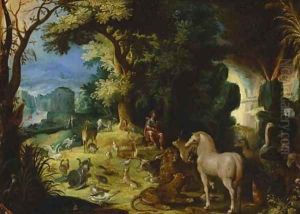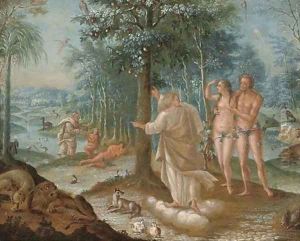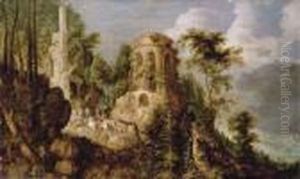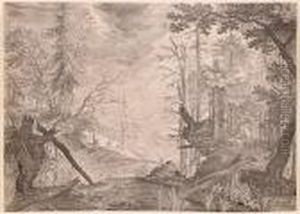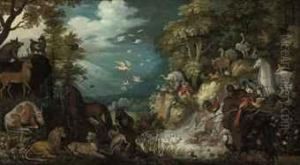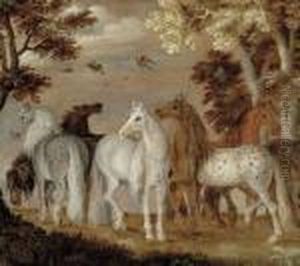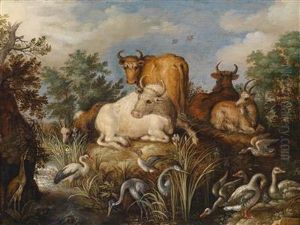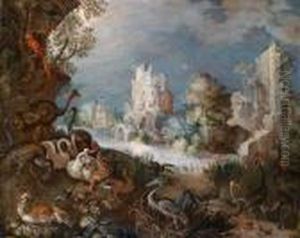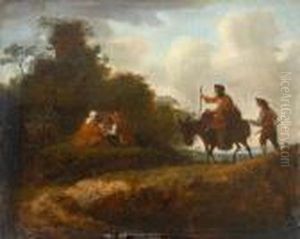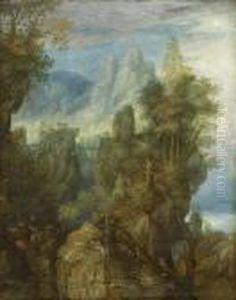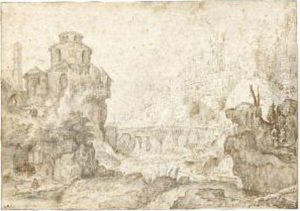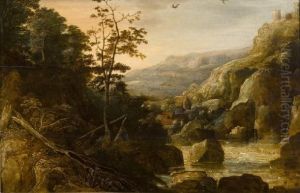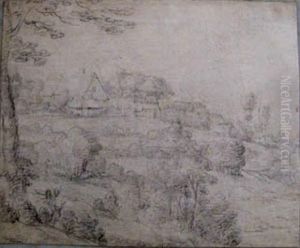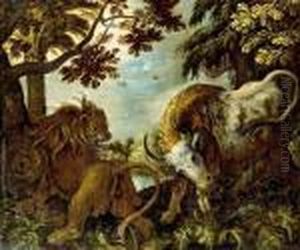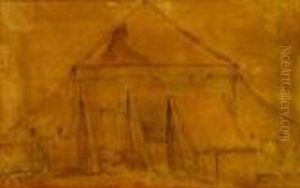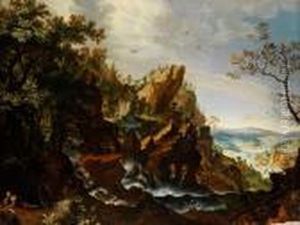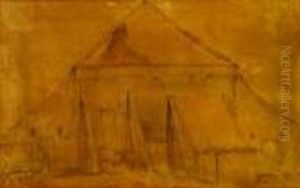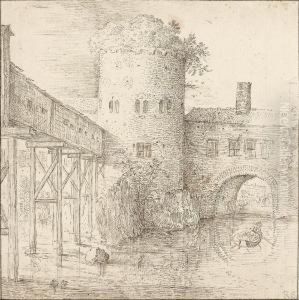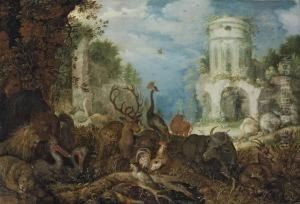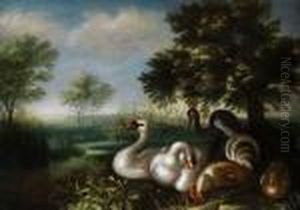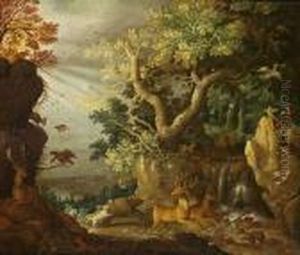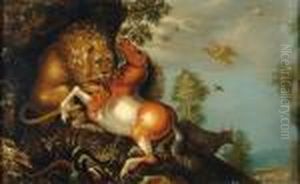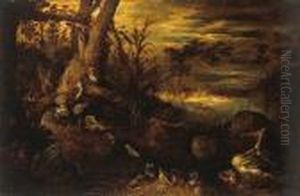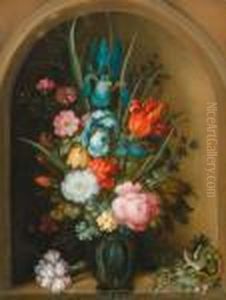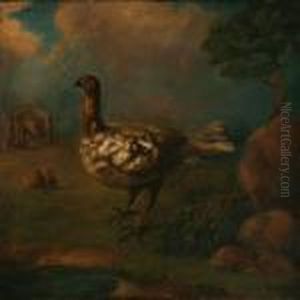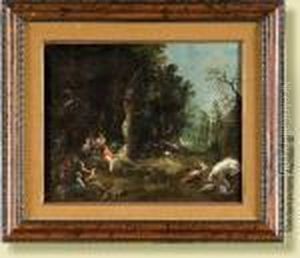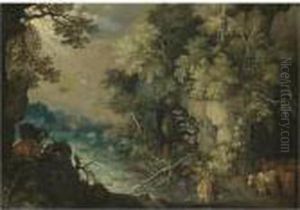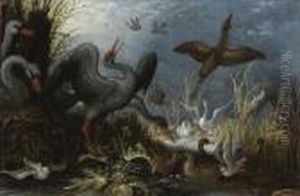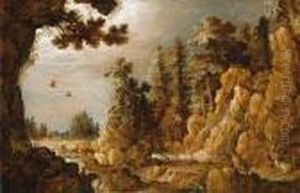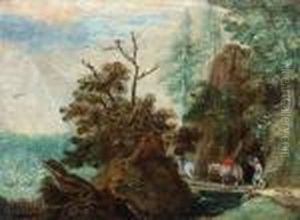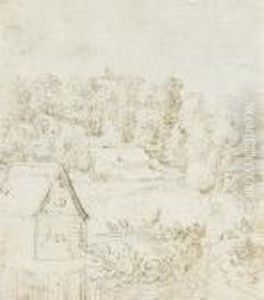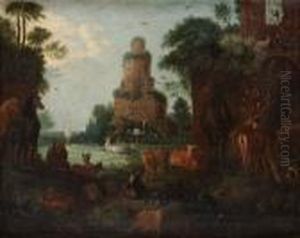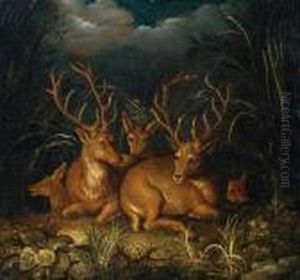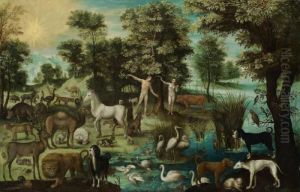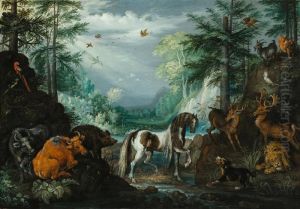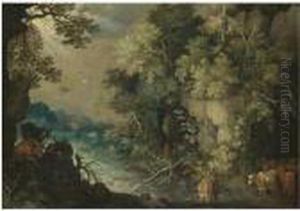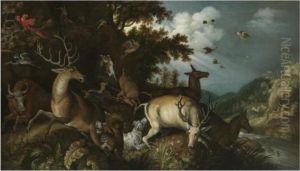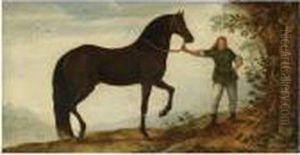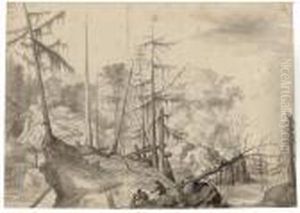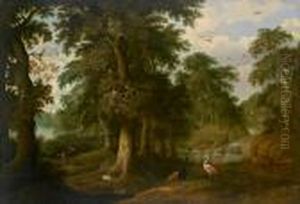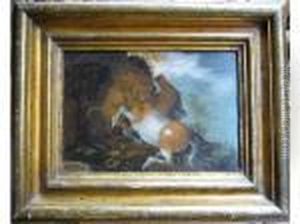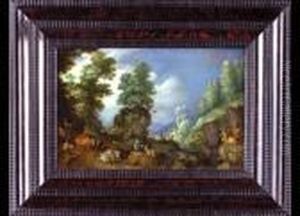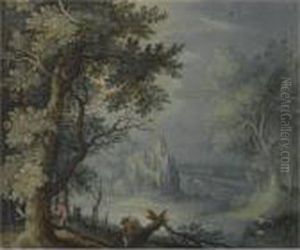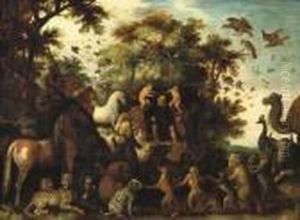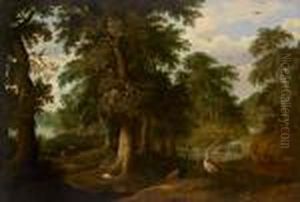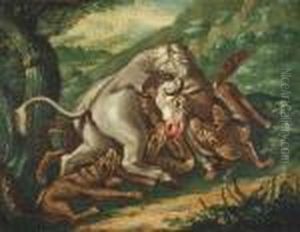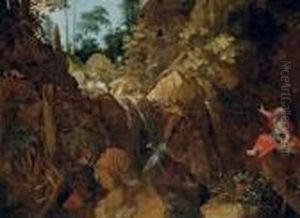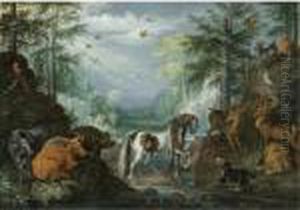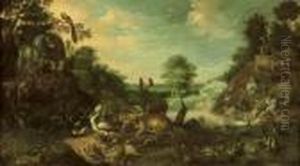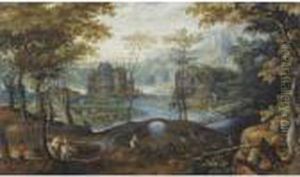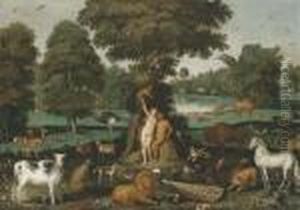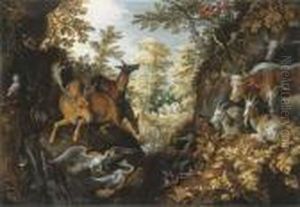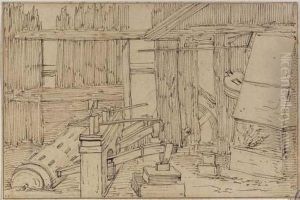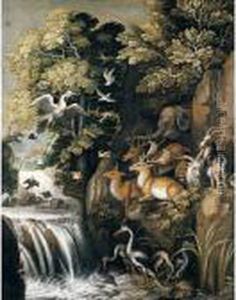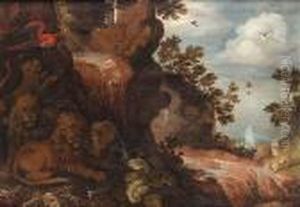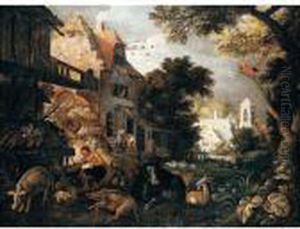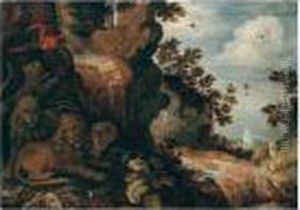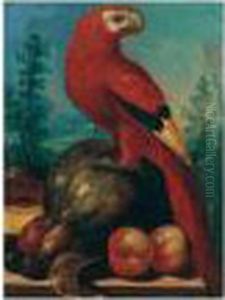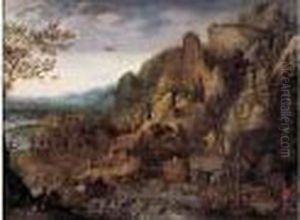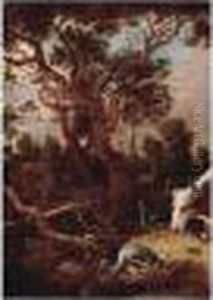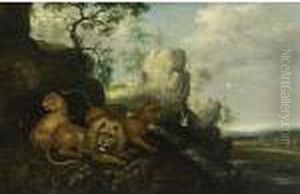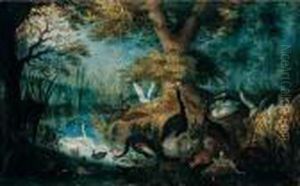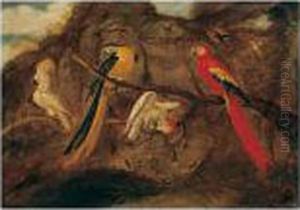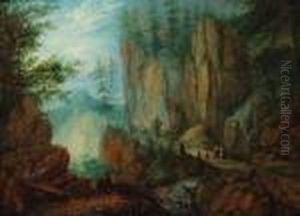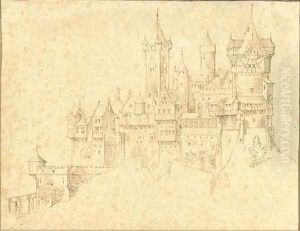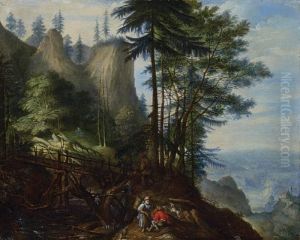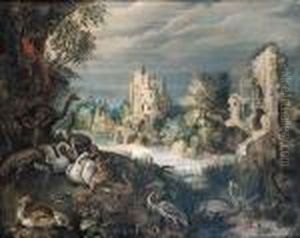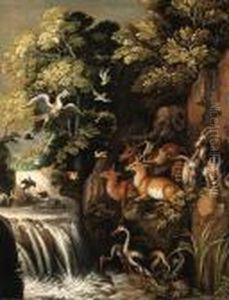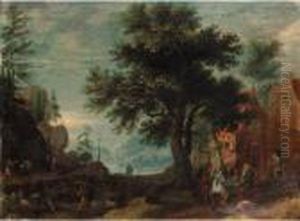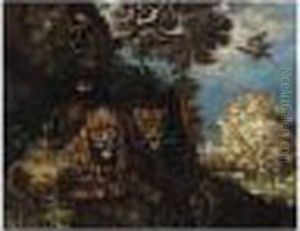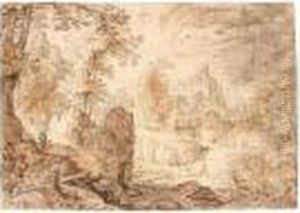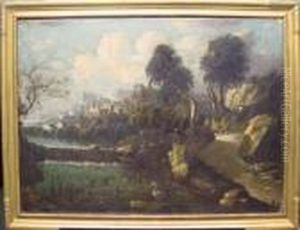Roelandt Jacobsz Savery Paintings
Roelandt Jacobsz Savery was a Northern European painter, born in Kortrijk, Flanders (now Belgium) in 1576, into a family with a strong artistic tradition. His brother, Jacob Savery, was also a painter. The Savery family fled to Haarlem in the Dutch Republic in 1584 to escape the religious turmoil and warfare in the Southern Netherlands.
Savery was trained by his brother and developed a strong foundation in landscape and animal painting. His works often reflect a meticulous attention to naturalistic detail, which was characteristic of the Netherlandish tradition of the time. Roelandt traveled to Prague in 1604, where he became court painter to the Holy Roman Emperor Rudolf II. The emperor's court was known for its patronage of the arts, particularly the natural sciences and the collection of exotic animals.
During his time in Prague, Savery's work was greatly influenced by the imperial collection of plants and animals, which he often included in his paintings. His landscapes became fantastical, featuring a combination of realistic animals and imaginary scenes. One of Savery's most famous works is 'The Garden of Eden with the Fall of Man' (1612), which showcases his skill in depicting a variety of animals.
After the emperor's death in 1612, Savery moved to Amsterdam and later settled in Utrecht. In the Dutch Republic, he continued to paint landscapes, still lifes, and animal scenes. His works from this period also include cityscapes and scenes from everyday life, but he is best known for his landscapes and representations of the natural world.
Savery's influence can be seen in the works of later artists who also specialized in landscapes and animal paintings. His attention to detail and the lifelike quality of his animals were particularly admired. Despite his success, Savery faced financial difficulties later in life and was reported to have fallen into a state of melancholy.
Roelandt Savery's works are now held in major museums around the world, and he is recognized for his contributions to the Northern European tradition of landscape and animal painting. He passed away in Utrecht in 1639, leaving behind a legacy of artwork that continues to be studied and admired for its beauty and intricate detail.
